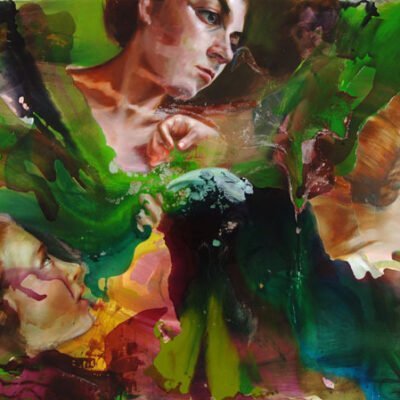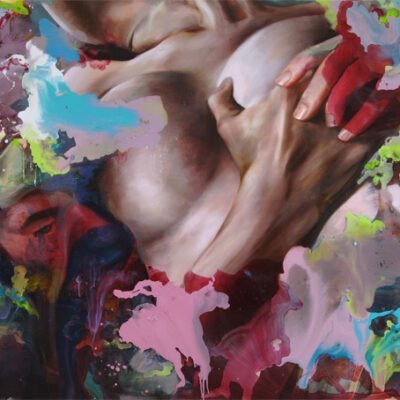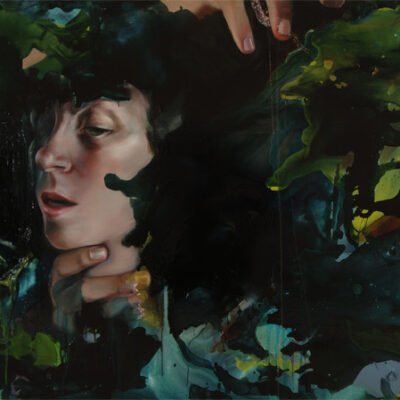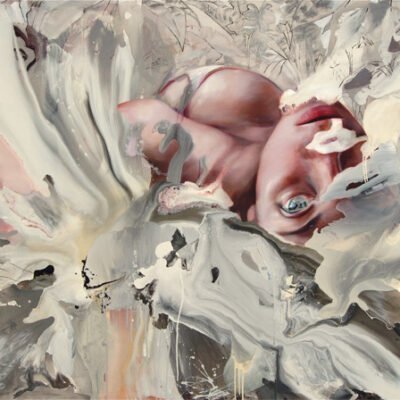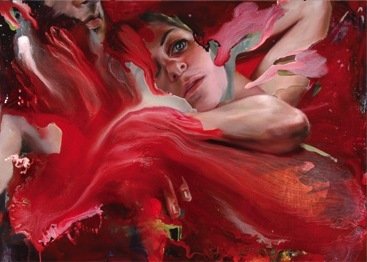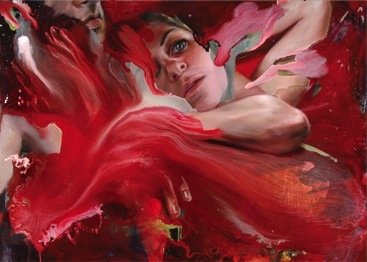
Angela Fraleigh
Women & Their Work is pleased to present Houston artist, Angela Fraleigh in her solo exhibit titled there i still my thirst. Fraleigh creates large-scale, sumptuously painted oils on panel in which she combines the painting styles of abstraction and figuration. Fraleigh states that through her paintings she is “questioning the social constructs of beauty, class, gender and role play”.
Violent and seductive, threatening and unpredictable, her use of paint complicates the images that are drawn from dramatic moments in literature leaving us unsure if the figures are being birthed or eaten away. The physicality of the rich colorful paint both corrupts and obscures the narrative in Fraleigh’s work. Essayist, Claire Barliant, Associate Editor, Artforum, brilliantly discusses the themes of beauty and the male gaze in Fraleigh’s work.
Artist Statement
Questioning social constructs of beauty, class, gender and role play I am interested in the complications of desire, what power people have available to them and how they use that power. These images serve as a means of escape from one’s personal histories but also provide a space to question these idealistic scenarios. Drawing on dramatic moments from literature and framing the romantic stereotypes that are created these images are complicated by obscured power structures. Ambiguity conceals where authority lies in these familiar images disrupting our understanding of these hackneyed relationships while bringing into the foreground the continual power struggles still fueling our political, social and intimate relationships.
These tensions are heightened as paint itself becomes a tool for the disturbance; a main protagonist in the story and a carrier of meaning. Violent and seductive, threatening and unpredictable it complicates the image leaving us unsure if the figures are being birthed or eaten away; if the paint is taking control, acting as savior, interrupting, manipulating or providing the stimulus for the relationship. Physicality of the paint both cankers and covers the narrative caressing the fine line between victim and volunteer. There is a desperate human quality in the work, one that embraces the flawed hero…. you know what was supposed to have happened but you also know it didn’t.
